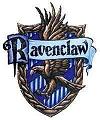Ordinarily, on Shemini Atzeret--the eighth day of lingering--at the end of Sukkot, we add t'filat ha-geshem--the prayer for rain--to the Amidah, which is the standing prayer in the daily services. It is considered bad luck when the rains come early, and make it difficult to dwell in the Sukkah--the harvest booth--as is commanded during the Feast of Ingathering Harvest.
Geshem continues to be said across the winter until the spring Festival of Pesach is celebrated, when the summer blessing for Tal--Dew--is added and Geshem is retired until the next Sukkot Holiday. This corresponds to the seasons of Israel, wet in the winter and dry in the summer.
This year. even as the Holy Days came early in the solar year, Rosh Hashanah starting on the evening of the 4th of September, so too did the rains come early. Or in our case, the monsoon stayed late, making holiday travel as difficult for Jews in Catron County, New Mexico, as it was for the Jews of Judea in the days of old when farmers were expected to build their Sukkot on the hills surrounding Jerusalem.
We had planned to attend High Holy Day Services in Flagstaff, at the little Heichal ba-Oranim synagogue, where we had gone last year. I was looking forward to finally being able to join that congregation, now that the house in Sedillo is under contract, and we are able to make the necessary contributions. We have been without a home synagogue for more than a year, and we were looking forward to making a commitment and enjoying a pleasant holiday in a very haimish shul.
Alas, it was not to be. As September came, a new and very wet monsoon plume settled over the Southwest. Predictions of thunderstorms and flash floods became a daily reminder that our roads could become impassible in no time at all.
 Rosh Hashanah itself was partly cloudy, but the threat of rain made us decide to stay home lest we not be able to get back should the rains come. We had a festive meal with all of the traditional foods on Erev Rosh Hashanah, and we prayed the evening service on the porch.
Rosh Hashanah itself was partly cloudy, but the threat of rain made us decide to stay home lest we not be able to get back should the rains come. We had a festive meal with all of the traditional foods on Erev Rosh Hashanah, and we prayed the evening service on the porch.The next morning, we again prayed on the porch, the sun dancing with the clouds as I proclaimed: Ha-yom harat olam! This is the day of the world's birth! And the Engineering Geek blew the intricate set of Shofar calls three times: once for Creation, once for Memory, and once for Revelation. The sound of the Shofar rang out across Freedom Ridge, and the horses raised their heads, the dogs barked, and the cows began lowing. The hawk soared and circled on the wind, unconcerned.
In the afternoon, we did leave for a drive around Big Lake, where the EG and my nephew skipped stones on the water after we cast our bread upon them in the ancient and fanciful ceremony of Tashlich, a casting away of the old and inviting in of the New Year. I have always thought that Tashlich is simply an excuse to take a walk on Rosh Hashanah afternoon, after a long morning service. It began to rain as we drove back along the county road to the ranch. Second day, and thunderstorms near candle-lighting for Shabbat. We missed the Sacred Assembly on the first and second days of the Seventh Month entirely.
On Sunday after a day of rain, I drove out with the EG behind me in the Dodge Ram in case he had to pull me out. After slipping and sliding down the county road, I went to Albuquerque for class, and to take care of some business. And on Tuesday, the rain set in there. It rained all day. ALL DAY. A record rainfall. I came home Wednesday, between storms. The road was soft, and there was water in the arroyo, and I drove on the high spots between ruts. Thursday, the rain began in our part of the state, and we knew that there would be no travel to Flagstaff for us. Friday, as I prepared the pre-fast meal, I read about the flooding in Colorado on the internet.
Just before sunset, we invited Yitzak Pearlman to perform Kol Nidre via YouTube.
All vows that we make between this Yom Kippur and the next . . .
Then candle lighting, and the evening service. I sang the parts of the service we could do without a minyan.
Lightning played across Freedom Ridge as we let the dogs in and began the Al Chet.
V'al kulam eloah s'lichot . . . for all these, O G-d of Forgiveness. . .
and the electric lights flickered along with the candles. A bolt of lighting. Almost simultaneous thunder. And the lights went out, leaving only the flickering candles.
Lev tahor b'ra-li, elohim . . .create in me a clean heart, O G-d . . . our shadows large upon the eastern wall in the candle light. Sometime in the night, the candles went out and the electricity was restored, but we were sleeping and the next light we saw was a pearly, gray dawn and ragged clouds scudding across the sky, driven by a wet wind.
 We dressed again in white. No leather, no grooming. For the first Yom Kippur day of my marriage, I did not see my husband--Reform Princeling that he is--in a dark suit, starched white shirt and somber tie. As we sat on the couch and read aloud from Climbing Jacob's Ladder: One Man's Journey to Rediscover a Jewish Spiritual Tradition the clouds gathered in the south. "Wind from the South has water in its mouth'\," chanted the EG, as the sky darkened and the rains began.
We dressed again in white. No leather, no grooming. For the first Yom Kippur day of my marriage, I did not see my husband--Reform Princeling that he is--in a dark suit, starched white shirt and somber tie. As we sat on the couch and read aloud from Climbing Jacob's Ladder: One Man's Journey to Rediscover a Jewish Spiritual Tradition the clouds gathered in the south. "Wind from the South has water in its mouth'\," chanted the EG, as the sky darkened and the rains began. All that day, as we prayed in the cool, shadowy living room in stocking feet, our tallitot wrapped for warmth and the feeling of being enfolded by Shechinah--the Indwelling Presence--the rains came in sprinkles and soft curtains, now and again hiding the Red Hill.
Morning Service.
"Let us proclaim the sacred power of this day:
It is awesome and full of dread . . .
On Rosh Hashanah it is written, on Yom Kippur it is sealed. . .
Who by fire, and who by water, who by sword and who by beast . . ."
Additional Service. And a short walk in the sprinkling rain.
Resting on the porch, still well wrapped.
Memorial Service.
Afternoon Service. The Ten Martyrs.
Eili tzion v'areha . . . For Zion and her cities I mourn
like a mother in her anguish,
like a woman who mourns the husband of her youth.
I mourn the exile of the servants of G-d,
makers of sweet melodies,
v'al dama asher shufach . . . their blood poured out like Zion's streams.
And all that day the rains fell, weeping like Rachel for her children . . .
For we did not know, cut off in the sacred silence of that day, that in Colorado, in New Mexico, in Catron County, the flood waters were rising, and in the Blue River Canyon on Catron's border with Arizona, people were lifted out by helicopter and brought out on bulldozers. And it rained. And rained.
Neilah. The Closing of the Gates.
"This is the house of G-d.
This is the gate of heaven . . .
El norah alila . . . G-d of awesome deeds,
grant us pardon . . . b'sh-at neilah . . . as the gates begin to close.
Avinu malkenu . . . let the gates of heaven be open to our prayer . . .
let the new year be a good year for us . . . make an end to all oppression
upon us . . .be our help.
And the rain stopped. And we stopped to say the blessing for the Rainbow
as the last rays of the setting sun shone across our valley.
". . . zocher ha-brit . . . who remembers the covenant . . .
Seu Sha-arim roshechem . . . Lift up your heads, O Gates!
Ha-shem, hu ha-elohim. . .
Seven times and the last long blast of the Shofar.
We thought of it happening hour after hour as the world turned from day to night.
All those at the Wall.
Havdalah.
"Blessed is the One who separates the holy from the ordinary,
light from darkness, the House of Israel from among the peoples. . ."
And the candle is extinguished in the sweet wine, the taste of which is on our lips.
And the lamps are lighted.
Motzi.
". . . who brings forth bread from the earth . . ."
Sweet round challah with raisins.
Cream cheese.
Salmon.
We broke the fast, and eating and drinking, we once again consider the goodness of the ordinary riches of our lives.
"For I saw how good it is for [man], and beautiful, to eat and drink and know goodness for all his work that he does under the sun . . ."
We had good holidays. It was still beautiful and filled with meaning that we made, though we missed the beauty of being in the midst of the holy congregation.
But the rains kept us off the roads and in our home.
We made the best of it and we did well.
We are soggy, and today I bottomed out the car in the arroyo, and had to have it towed because the box that monitors emissions and engine codes came loose.
We have rutted roads, a few wash-outs, and full streams.
But no helicoptors or bulldozers.
We have electricity.
We are well.
It's raining again.
The water-pouring of Shemini Atzeret comes a little early.
Blessed is the One who causes the wind to blow and the rain to fall.
Geshem.
We wanted rain and we needed rain.
Everything is green, even as the Aspens are beginning to turn gold.
But maybe, just maybe, it's time to build an ark? They need one in Colorado, Northern New Mexico, and on the Blue River.
What's a cubit . . .



























































